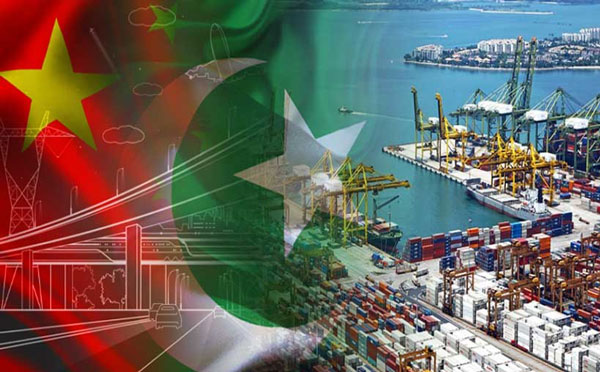The China-Pakistan Economic Corridor (CPEC) was launched as a transformative initiative, envisioned as a cornerstone of regional connectivity and a catalyst for Pakistan’s economic development. This monumental project, a flagship of China’s Belt and Road Initiative (BRI), encompasses a wide array of infrastructure, energy and trade-related ventures aimed at enhancing Pakistan’s economic potential. It holds the promise of alleviating Pakistan’s longstanding challenges by modernizing its infrastructure, bridging the energy deficit and boosting trade. Despite its immense potential, however, CPEC has not yet yielded the anticipated results. A closer examination reveals the reasons behind its slow progress and the measures needed to unlock its full potential.
CPEC is often described as a ray of light for Pakistan’s struggling economy. The initiative has already brought significant investment in energy projects, road networks and the development of Gwadar Port, promising to create employment opportunities, reduce the energy shortfall and enhance trade connectivity. For example, the completion of energy projects under CPEC has added over 5,000 MW of electricity to Pakistan’s national grid, significantly reducing load-shedding and fostering industrial productivity. Infrastructure developments, such as the construction of the Multan-Sukkur Motorway, have improved connectivity within Pakistan and with neighboring regions. Gwadar Port, although still under development, has seen progress, with the operationalization of free zones and increased trade activities. If fully realized, CPEC could transform Pakistan into a regional trade hub, linking Central Asia, South Asia and the Middle East. It has the potential to elevate Pakistan’s economic standing and provide a much-needed stimulus to its growth trajectory. However, the journey of CPEC has not been without challenges.
One of the primary reasons for the slow progress of CPEC is the inconsistency in policy implementation and lack of political stability. Frequent changes in government and shifting policy priorities have disrupted the momentum of various projects. Political instability often leads to delays in decision-making, mismanagement and a lack of continuity in vision, which are detrimental to long-term initiatives like CPEC. Additionally, bureaucratic hurdles, red tape and inefficient project management have further slowed progress.
Security concerns have also posed significant challenges to CPEC. The targeting of Chinese nationals and infrastructure projects by insurgent groups has created an atmosphere of insecurity. These incidents have not only put a strain on Pakistan-China relations but also raised concerns among potential investors about the safety of their investments. Ensuring the safety and security of personnel and assets involved in CPEC is paramount to regaining the trust of stakeholders and maintaining the project’s momentum.
Economic challenges in Pakistan have also hindered the full realization of CPEC’s potential. Rising inflation, a burgeoning fiscal deficit and a weakening currency have constrained the government’s ability to finance and support ongoing projects. Furthermore, delays in payments to Chinese contractors and unresolved issues related to profit repatriation have caused friction between the two countries, leading to hesitations in further investment.
To address these challenges and ensure the complete and successful implementation of CPEC, several measures must be taken. Firstly, there is a need for a unified and consistent policy framework that transcends political changes. A bipartisan consensus on the strategic importance of CPEC is essential to safeguard the project from political disruptions. Governments must prioritize the long-term benefits of CPEC over short-term political gains and ensure that policy decisions are guided by national interest.
Strengthening the security apparatus is crucial for the success of CPEC. Establishing a robust security framework to protect infrastructure, personnel, and investments is non-negotiable. This includes enhancing the capacity of security forces, improving intelligence-sharing mechanisms, and fostering cooperation with China to address security concerns. The creation of dedicated security forces, such as the Special Security Division for CPEC, is a step in the right direction, but further efforts are needed to eliminate threats to the project.
Economic reforms are also imperative to attract and sustain investments. The government must focus on improving the ease of doing business, reducing bureaucratic inefficiencies, and ensuring timely payments to contractors. Additionally, resolving issues related to profit repatriation and creating an investor-friendly environment will encourage Chinese and other foreign investors to contribute to CPEC’s success.
Public awareness and support for CPEC are equally important. Misconceptions and skepticism about the project’s intentions and benefits can hinder progress. Transparent communication and engagement with the public, as well as with local stakeholders, can help build trust and ensure that the benefits of CPEC are widely recognized and appreciated. Local communities must also be involved in decision-making processes and provided with opportunities to benefit from the project through employment, skills development, and infrastructure improvements.
Another crucial aspect is the timely completion of Special Economic Zones (SEZs) under CPEC. These zones are designed to attract investments in manufacturing and industry, creating jobs and boosting exports. However, their development has been slow due to land acquisition issues, lack of infrastructure, and inadequate coordination between federal and provincial authorities. Addressing these bottlenecks and expediting the establishment of SEZs should be a top priority.
Furthermore, the success of CPEC depends on fostering a balanced and mutually beneficial partnership between Pakistan and China. Both countries must address issues of transparency, equity and sustainability to ensure that the benefits of the project are shared fairly. Regular dialogue and collaboration between the two governments can help resolve disputes and align their visions for CPEC’s future.
CPEC remains a beacon of hope for Pakistan’s economic revival and development. Despite the challenges it faces, its potential to transform the country’s infrastructure, energy landscape, and trade dynamics is undeniable. By addressing the impediments to its progress and adopting a proactive and collaborative approach, Pakistan can unlock the full potential of CPEC and pave the way for a brighter and more prosperous future. The journey may be challenging, but with commitment, vision, and perseverance, CPEC can truly become the game-changer it was envisioned to be.










